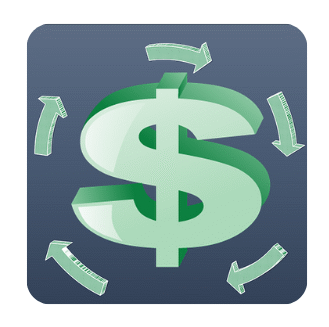Affiliate marketing is an accessible and flexible way to earn money online if you’re looking for new income streams. If you don’t want to handle products or run a physical business, affiliate marketing lets you promote products and earn commission from sales via your unique links. I’m going to walk you through how affiliate marketing works, what you need to get started, and some tricks for you to actually make money affiliate marketing. 
Understanding Affiliate Marketing: What’s the Deal?
Affiliate marketing has been around for a while, boosting the growth of online businesses for decades. You don’t actually need to own a product. Your main job is to connect customers to brands using your referral link. Each time someone uses your link to buy something or complete an action, you earn a commission. Pretty simple in theory, but there’s more to it once you start digging in. Big ecommerce sites like Amazon, eBay, and even major travel companies have affiliate programs. Content creators, bloggers, and even people on social media are cashing in by sharing links for things they genuinely like or use. Affiliate marketing can work as a side hustle or a main gig. It all depends on your niche and how much time you put in. Statista found that U.S. affiliate marketing spending hit $8.2 billion in 2022, and the industry just keeps growing.
The Basics: How Affiliate Marketing Works
Affiliate marketing might sound complicated up front, but it usually follows a straightforward process. Here’s how it typically plays out:
- Sign Up for Affiliate Programs: You join an affiliate program or sign up through an affiliate network (like ShareASale, CJ Affiliate, or Amazon Associates).
- Get Your Unique Tracking Links: You receive links that track sales or actions back to you.
- Promote Products or Services: You share your links on your blog, YouTube channel, social accounts, or even through email lists.
- Earn Commissions: When someone clicks your link and completes a purchase (or other action), you pocket a commission.
Commission rates and payment structures depend on the program. Some pay per sale, some per lead, and some per click. Typical commission ranges fall between 5% and 50%, so choosing offers that pay well and fit your audience really matters for your bottom line.
Starting Out: Steps to Launch Your Affiliate Marketing Side Hustle
Getting into affiliate marketing doesn’t require tech wizardry, but having a decent plan helps you get traction faster. Here’s what I recommend if you’re new and want to get things rolling:
- Pick a Niche: Find a focus that matches your interests or skills. Niches like tech gadgets, beauty, health, finance, and hobbies work well. Targeting a specific group helps build trust and makes it easier to recommend things you actually know about.
- Sign Up for Affiliate Programs: You can go straight to a brand’s site and look for their “Affiliate” or “Partners” page. Or try networks that handle multiple programs in one spot. Always read the fine print, since payment terms, cookie duration, and minimum payouts are all worth checking.
- Create a Platform: Most affiliate marketers use blogs, websites, YouTube, podcasts, or social media as their main platform. A simple blog or YouTube channel works perfectly for beginners.
- Produce Honest, Valuable Content: Reviews, comparisons, tutorials, listicles (“Top 5 Gaming Mice”), and buying guides do well. The point is to solve problems for your audience and genuinely help them.
- Insert Your Affiliate Links: Add your special links in your content. Make sure to mention in your post or video that you might earn a commission if someone buys through your link. Transparency builds trust (and it’s required by most affiliate programs and even the FTC).
Combining these steps with consistent content and a helpful approach goes a long way, especially in the early stages. As you create and grow your platform, you’ll want to make regular updates and tailor your content to your audience’s changing needs.
Things You’ll Want to Consider Before Jumping In
Affiliate marketing is a low-barrier way to get into online business, but some things can slow you down if you’re not ready for them. Here are a few realities to keep in mind:
- Finding the Right Programs: Not every affiliate program is a good fit. Some products pay well but have low demand, while others get lots of traffic but very low commissions. Careful research helps you focus your time on programs that make sense.
- Content Takes Time: Building a blog or channel that actually gets visitors (and clicks) doesn’t happen in a week. SEO, keyword targeting, and sharing on social media gradually boost your reach.
- Competition: Popular product categories like tech, fashion, and health supplements are saturated. Focusing on subniches or serving very specific audiences makes it easier to stand out.
- Compliance and Transparency: Disclosure is required. If you don’t tell your readers you’re using affiliate links, you risk losing trust and even getting booted from affiliate programs or fined.
Finding the Right Programs
I learned pretty fast that chasing the highest commission rates isn’t always best. Programs with helpful resources, detailed analytics, and supportive communities often mean more growth in the long run. Look for programs that are open about how they track sales, pay out on time, and let you promote products you actually believe in.
Content Takes Time
When I started, it was tempting to upload lots of posts quickly, but building quality content leads to better, lasting online traffic. Patience, along with ongoing updates, helps bring in the type of visitors who click and buy. Adding fresh content over time also gives search engines a reason to keep coming back and ranking your site higher.
Competition
It’s overwhelming to compete with huge review sites, but narrowing your focus keeps you relevant. For example, instead of reviewing all fitness equipment, I stuck to home gym gear for small spaces and got much better results. By focusing on a tight niche, you can connect directly with people interested in what you offer instead of getting lost among general review websites.
Compliance and Transparency
Most programs provide sample disclosures, which can be just a couple of lines at the start or end of a post or description. Readers appreciate honesty and it keeps everything above board. By developing trust, you’re more likely to have returning visitors who value your opinion and recommendations. With realistic expectations and a mindful approach, many of the common roadblocks in affiliate marketing are much easier to handle. Having a stable plan and taking steady action prevents unnecessary headaches, especially when starting out.
Smart Tips and Tricks for Higher Affiliate Earnings
Once you have the basics down, some practical tweaks can really improve your affiliate results. Here’s what I found super useful: Focus on User Intent: Make content that answers real questions or solves specific problems. People who search for “best laptops for students” are often ready to buy, so targeting these search terms pays off. Dig into what your audience is looking for and tailor your articles or videos to give them direct solutions. Test and Track: Use tools like Google Analytics, affiliate dashboards, or simple spreadsheets to monitor where your clicks and sales come from. Adjust your content and promotion to focus on what works best. Over time, you’ll spot patterns and can maximize the content that generates more conversions. Email Lists are Gold: Collecting emails and sending targeted newsletters can drive more regular sales. Offering freebies or helpful guides in exchange for email signups helps build a loyal audience. Having an email list also means you aren’t just depending on social media or search traffic; you own your audience connection. Stay Authentic and Review Honestly: People can tell when you’re only pushing products for a quick buck. Sharing personal experiences, being honest about product strengths and weaknesses, and even recommending products you don’t earn commissions on go a long way in building credibility and trust with your readers or viewers. Your audience is more likely to follow your suggestions if they feel you’re truly helping them make informed choices. Adding these strategies to your toolkit can steadily grow your affiliate income and set you up for more consistent payouts every month. Staying curious and adjusting your approach as you gather feedback makes a huge difference.
Real-World Examples: How Affiliate Marketing Pays Off
I’ve seen affiliate marketing change the income streams of all sorts of people, from tech bloggers to crafters. Here are a few ways affiliate marketing fits into different real-life scenarios:
- Review Sites: Tech review bloggers make steady commissions by writing honest reviews and sharing links to the latest gadgets.
- YouTube Tutorials: Video creators in beauty and gaming put affiliate links in their video descriptions, earning on both old and new content as long as people keep watching and clicking. By addressing common problems or reviewing trending products, creators keep their links relevant and active.
- Comparison Blogs: Sites dedicated to comparing software, travel deals, or subscription boxes build content libraries that answer buying questions and funnel readers straight to signup pages. These posts become resources that buyers return to or share with friends, providing traffic for months or even years.
With the right approach, affiliate marketing can move from a small experiment to a solid source of side or even full-time income. Consistent, audience-driven strategies make a lasting difference.
Frequently Asked Questions
If you’re thinking about starting with affiliate marketing, some common questions pop up: Question: How long does it take to make money with affiliate marketing? Answer: It usually takes a few months to start seeing results. Some people earn their first commissions within weeks, but steady income generally takes consistent effort over several months. Building up traffic and trust is the key to earning more over time.
Question: Do I need a website to be an affiliate marketer? Answer: Not always. While websites and blogs are popular, you can also use YouTube, TikTok, email newsletters, or social media to share your affiliate links. Some programs do require you to have a website, though, so check before signing up. Flexibility makes affiliate marketing accessible for many types of creators.
Question: What products are the easiest to promote? Answer: Products or services you already use and genuinely trust work best. Niches you’re knowledgeable about, and that have active buyers, are more likely to bring steady commissions. Pay attention to trends and look for items where people seek real advice before purchasing.
Ready to Get Started?
Affiliate marketing turns regular online activity, like posting blogs or videos, into real profit with the right game plan. Focusing on a specific area, choosing honest products, building trust with your audience, and fine-tuning your approach can help you grow your side hustle into something much bigger. I found sticking with it and always looking for ways to help my audience paid off over time. Take that first step, keep learning, and you’ll be surprised at what you can achieve. Remember, anyone can start—what counts is taking action and being authentic along the way.
